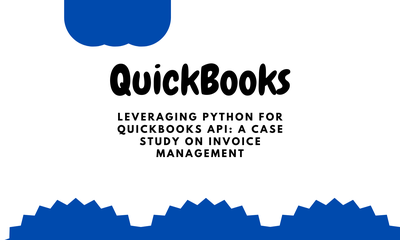Rút gọn các loại Ứng dụng Xero để tích hợp
By manhnv, at: 18:05 Ngày 22 tháng 5 năm 2024
Thời gian đọc ước tính: __READING_TIME__ phút


Việc đọc tài liệu từ nhiều dịch vụ khác nhau đôi khi có thể rất khó khăn, tốn thời gian và dẫn đến hiểu lầm hoặc thiếu sót. Đây là lúc blog của chúng tôi phát huy tác dụng, cung cấp cái nhìn tổng quan toàn diện và hợp lý để giúp các nhà phát triển hiểu rõ hơn mà không cần phải đọc qua các tài liệu dài dòng. Mục tiêu của chúng tôi là cung cấp cho bạn cái nhìn tổng quan về các loại ứng dụng Xero khác nhau và công dụng của chúng, giúp bạn tiết kiệm thời gian và công sức.
Giới thiệu
Khi tích hợp với Xero, việc chọn đúng loại ứng dụng là rất quan trọng. Xero cung cấp ba loại ứng dụng chính, mỗi loại được thiết kế cho các nhu cầu tích hợp cụ thể: Code Flow, PKCE Flow và Custom Connection. Hiểu được các loại này sẽ giúp bạn chọn loại phù hợp nhất với yêu cầu của mình. Hãy cùng tìm hiểu sâu hơn về từng loại, trường hợp sử dụng và ưu điểm, nhược điểm của chúng.
1. Code Flow
- Phù hợp nhất với:
Ứng dụng máy chủ web có thể lưu trữ bí mật khách hàng một cách an toàn.
- Giới hạn kết nối:
25 kết nối (không giới hạn sau khi được chứng nhận).
- Có thể đăng ký trên Cửa hàng ứng dụng:
Có.
- Truy cập ngoại tuyến:
Có.
- Chi phí:
Miễn phí.
- Khả năng sử dụng theo khu vực:
Toàn cầu.
Trường hợp sử dụng: Loại này lý tưởng cho các nhà phát triển xây dựng các ứng dụng phía máy chủ, nơi bí mật khách hàng có thể được lưu trữ an toàn. Ví dụ: bảng điều khiển kế toán dựa trên web tương tác với dữ liệu Xero có thể được hưởng lợi từ việc sử dụng Code Flow.
Ưu điểm:
- Có thể quản lý nhiều kết nối.
- Có thể đăng ký trên cửa hàng ứng dụng Xero.
- An toàn, vì nó yêu cầu máy chủ xử lý chuyển hướng OAuth.
Nhược điểm:
- Yêu cầu một máy chủ web để cung cấp URL chuyển hướng cho OAuth, điều này làm phức tạp việc tích hợp bằng các script Python đơn giản.
- Cài đặt phức tạp hơn so với các phương pháp khác.
2. PKCE Flow
- Phù hợp nhất với:
Ứng dụng di động và máy tính để bàn không thể lưu trữ bí mật khách hàng một cách an toàn (Ứng dụng trang đơn - SPA hiện không được hỗ trợ).
- Giới hạn kết nối:
25 kết nối (không giới hạn sau khi được chứng nhận).
- Có thể đăng ký trên Cửa hàng ứng dụng:
Có.
- Truy cập ngoại tuyến:
Có.
- Chi phí:
Miễn phí.
- Khả năng sử dụng theo khu vực:
Toàn cầu.
Trường hợp sử dụng: PKCE Flow phù hợp với các ứng dụng di động và máy tính để bàn, nơi lưu trữ bí mật khách hàng một cách an toàn là không khả thi. Một ví dụ có thể là một ứng dụng di động cho phép người dùng quản lý hóa đơn của họ mọi lúc, mọi nơi, đảm bảo an ninh mà không cần bí mật khách hàng được lưu trữ.
Ưu điểm:
- Không cần lưu trữ bí mật khách hàng, tăng cường bảo mật cho các ứng dụng di động và máy tính để bàn.
- Có thể quản lý nhiều kết nối.
- Hỗ trợ truy cập ngoại tuyến.
Nhược điểm:
- Hiện không hỗ trợ cho các ứng dụng trang đơn (SPA).
- Yêu cầu thiết lập ban đầu phức tạp hơn so với Custom Connection.
3. Custom Connection
- Phù hợp nhất với:
Tích hợp máy với máy, phía máy chủ.
- Giới hạn kết nối:
Một kết nối.
- Có thể đăng ký trên Cửa hàng ứng dụng:
Không.
- Truy cập ngoại tuyến:
Có.
- Chi phí:
Phí hàng tháng trên tổ chức Xero (10 đô la Úc/tháng bao gồm GST, 10 đô la NZ/tháng chưa bao gồm GST, 5 bảng Anh/tháng chưa bao gồm VAT).
- Khả năng sử dụng theo khu vực:
Chỉ các tổ chức Xero ở Anh, Úc và New Zealand.
Trường hợp sử dụng: Custom Connection được thiết kế cho các tích hợp phía máy chủ, nơi không yêu cầu tương tác trực tiếp với người dùng. Ví dụ bao gồm việc đồng bộ dữ liệu tự động giữa Xero và các hệ thống nội bộ khác, chẳng hạn như hệ thống ERP hoặc CRM.
Ưu điểm:
- Có thể tích hợp bằng các script Python đơn giản mà không cần máy chủ hoặc URL chuyển hướng cho OAuth.
- Gọi trực tiếp API để lấy token truy cập và sử dụng nó cho các cuộc gọi API khác.
- Lý tưởng cho tích hợp máy với máy và phía máy chủ.
Nhược điểm:
- Giới hạn chỉ một kết nối.
- Thiếu các lợi ích bảo mật của chuyển hướng OAuth 2.0.
- Phát sinh phí hàng tháng.
Chọn đúng loại ứng dụng
Khi quyết định sử dụng loại ứng dụng nào, hãy xem xét những điều sau:
- Bảo mật: Nếu ứng dụng của bạn có thể lưu trữ bí mật khách hàng một cách an toàn, Code Flow có thể là lựa chọn tốt nhất. Nếu không, PKCE Flow phù hợp hơn.
- Tương tác người dùng: Đối với các ứng dụng yêu cầu tương tác người dùng (ví dụ: ứng dụng di động hoặc máy tính để bàn), PKCE Flow là phù hợp. Đối với tương tác máy với máy, Custom Connection là lý tưởng.
- Chi phí và khả năng sử dụng: Custom Connection có phí hàng tháng và bị giới hạn ở các khu vực cụ thể, trong khi Code Flow và PKCE Flow miễn phí và có sẵn trên toàn cầu.
Bắt đầu
- Đăng ký ứng dụng của bạn: Truy cập Cổng thông tin dành cho nhà phát triển Xero và đăng ký ứng dụng của bạn.
- Chọn loại ứng dụng: Chọn loại ứng dụng phù hợp dựa trên nhu cầu tích hợp của bạn.
- Làm theo luồng ủy quyền: Triển khai luồng OAuth 2.0 theo loại ứng dụng bạn đã chọn.
- Phát triển và kiểm tra: Sử dụng tài liệu API của Xero để phát triển và kiểm tra kỹ lưỡng ứng dụng của bạn trước khi đưa vào sử dụng.
Kết luận
Bằng cách hiểu các loại ứng dụng Xero khác nhau và các trường hợp sử dụng tương ứng, bạn có thể chọn phương pháp tích hợp tốt nhất để đáp ứng các yêu cầu kinh doanh của mình. Mặc dù blog này cung cấp cái nhìn tổng quan toàn diện, nhưng chúng tôi khuyến khích các nhà phát triển nên đọc tài liệu chính thức của Xero để biết thông tin chi tiết và cập nhật nhất.





